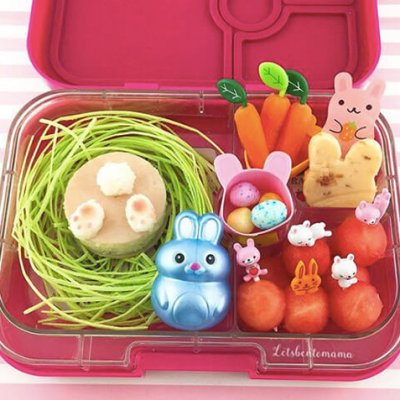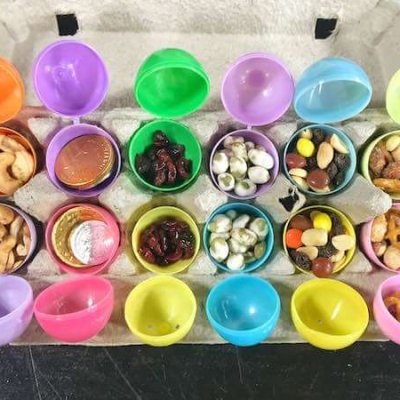The Ultimate Guide to Shelf Stable Milks and How to Use Them
By
Holley Grainger |
Published:
Mar 16, 2020 | Latest updated:
Sep 28, 2023
Keep your PANTRY stocked – with MILK! Learn more about Shelf Stable Milks including evaporated milk, milk powder, ultra processed milk and sweetened condensed milk.
 Photo Credit: PBS
Photo Credit: PBS
Wondering why some milks do not have to be refrigerated? Curious how you can enjoy the benefits of real milk whether you’re out of power from a storm or stockpiling canned goods in the event of a quarantine? I’ve got you covered with a deep dive into the various types of “pantry milks” (aka shelf-safe milks, no-spoil milks or shelf-stable milks). From what they are to how to store them to how to use them in recipes, get the 411 on evaporated milk, dry milk powder, shelf stable/UHT milk and sweetened condensed milk.
Scroll down to find information on the following topics:
- What are Pantry Milks?
- Watch Holley Explain the Different Pantry Milks to Martha Stewart on Martha Bakes.
- Can Pantry Milks be Used Interchangeably with Fresh Milk?
- What is Evaporated Milk and How Can I Use It?
- How Long Can I Store Evaporated Milk?
- How Can I Use Evaporated Milk in Recipes?
- What is Dry Milk Powder and How Can I Use It?
- How Long Can I Store Dry Milk Powder ?
- How Can I Use Dry Milk Powder in Recipes?
- What is Shelf-Stable Milk and How Can I Use It?
- Is Shelf-Stable Milk Safe?
- How Long Can I Store Shelf-Stable Milk?
- How Can I Use Shelf-Stable Milk in Recipes?
- What is Sweetened Condensed Milk?
- How Long Can I Store Sweetened Condensed Milk?
- How Can I Use Sweetened Condensed Milk in Recipes?
- What is the History Behind Pantry Milks?
 Holley Grainger discusses Pantry Milks on Martha Bakes
Holley Grainger discusses Pantry Milks on Martha Bakes
What are Shelf Stable Milks?
Pantry milks or “shelf-stable” milks, whether evaporated, sweetened condensed, powdered or otherwise, all start as fresh cow’s milk and then are transformed (usually with heat) into their unique products with differentiating characteristics. Pantry milks are a form of dairy milk that do not require refrigeration but uphold similar qualities as fresh milk. Each form of “pantry milk” begins with real dairy milk and then is treated in a special way to make it shelf stable.
Below, I have broken down the unique characteristics of each pantry milk as well as shared the storage information and recipe usage.
Watch Holley Explain the Different Pantry Milks to Martha Stewart on Martha Bakes
Psst…I shared my knowledge about no-spoil milks with Martha Stewart on Martha Bakes. Want to learn how to use multiple sources of milk in a recipe? Then don’t miss the Cuatro Leches Cake shared during my episode. Be sure to watch the segment!
Can Pantry Milks be Used Interchangeably with Fresh Milk?
Yes! Shelf-stable milk, evaporated milk and dry milk powder can be used in the same way that you would use fresh milk. However, because of the added sugar, sweetened condensed milk is not an equivalent substitute.

What is Evaporated Milk and How Can I Use It?
Evaporated Milk is fresh, homogenized milk that has been dehydrated and/or concentrated to a point where 60 percent of the liquid is been removed (concentrated) through heat. This process is to how you would reduce a sauce (let the liquid evaporate to concentrate the remaining ingredients).
Evaporated milk has Vitamin D added and is available in non-fat, low-fat, whole and lactose-free varieties. It has a slightly caramelized or cooked flavor.
How Long Can I Store Evaporated Milk?
Always go by the “best by” date on the can, but typically, unopened whole evaporated milk is good for about a year on the shelf. Unopened evaporated skim milk is good for about 9 months. Once opened and stored properly in the fridge, it will last for 3-4 days.
How Can I Use Evaporated Milk in Recipes?
Evaporated milk is used in the same way you would fresh milk. If you reconstitute evaporated milk with water then it is essentially the same thing as shelf stable/fresh milk and can be used interchangeably. Evaporated milk has a texture similar to cream making it a delicious option for creamy soups, custards, pies, sauces and casseroles In these cases, use the evaporated milk from the can (as is) without reconstituting/adding equal parts water.
From Classic Swedish Meatballs to German Chocolate Cream Pie, Taste of Home shares 40 extra-delicious recipes that use evaporated milk. Check them out!

What is Dry Milk Powder and How Can I Use It?
Dry milk powder (often referred to as nonfat dry milk powder) is concentrated milk with all liquid removed. It is done through a drying and heating process which ultimately removes or evaporates away the liquid. Dry milk powder is simple to reconstitute. Just add water, mix well and chill. Be sure to store reconstituted dry milk powder in an air tight container in the fridge (because it is real milk after all).
How Long Can I Store Dry Milk Powder ?
Once opened, dry milk powder lasts about 3 months. While you don’t have to refrigerate it after opening, refrigeration is an extra insurance policy for freshness. However, it is not mandatory to refrigerate it after opening.
How Can I Use Dry Milk Powder in Recipes?
Reconstituted dry milk powder can be used in the same way you would use fresh milk. You can also add it in powder form to recipes like pasta dishes, casseroles, mashed potatoes, smoothies, hot chocolate and soups to increase protein and nutritional content of those items.
Dry milk powder is often used in its powder form to add more protein and calcium (i.e. nutrition) to a recipe. In fact, I often recommend it to parents as an additive in smoothies and other creamy foods when trying to help children gain weight. It also adds moistness to breads and baked goods. Used in bread with its added protein & extra sugar makes for a darker more golden crust & adds tenderness to the crumb.

What is Shelf-Stable Milk and How Can I Use It?
Shelf-stable milk is real milk that has been pasteurized at an ultra-high temperature, or UHT, that comes in sterilized, aseptic containers. It’s real milk, just like the kind you buy chilled in the dairy aisle, but its special pasteurization and packaging process gives it a shelf life of several months without requiring refrigeration.
Is Shelf-Stable Milk Safe?
While most milk goes through a standard pasteurization process, UHT milk goes through ultra-pasteurization, which safely heats the milk to a higher-than-usual temperature. This, like regular pasteurization, kills bacteria in the milk that may be harmful or cause the milk to spoil. It’s then packaged in sterilized containers, also known as aseptic packaging, which helps keep the milk fresher longer. Once you open a container of shelf-stable milk, be sure to store it in the refrigerator.
How Long Can I Store Shelf-Stable Milk?
Shelf stable milk (UHT milk) can be stored unopened and unrefrigerated for about three months. Be sure to read the label as this can vary by brand. Once the container is opened, shelf stable milk should be refrigerated in an airtight container and has the same shelf life as fresh milk (seven to ten days).
How Can I Use Shelf-Stable Milk in Recipes?
Shelf stable milk can be used interchangeably in any recipe that calls for fresh milk. Shelf stable milk is beneficial, first and foremost, because if you run out of fresh milk in the fridge and you’ll always have some in your pantry! You can use it any way you would fresh milk. The additional advantage is that because of the high heat that allows it to be shelf-stable, it will have a slightly sweeter, caramelized flavor compared to fresh milk.

What is Sweetened Condensed Milk?
Sweetened condensed milk is a mixture of milk with about 60 percent of its liquid removed (concentrated) through heat. This concentration process is a similar concept to how you would reduce a sauce. Sweetened condensed milk has added sugar and is very rich, thick and sweet. It has a light caramel color that is a result of the Maillard reaction.
You can buy both in low or full fat versions. For low-fat, they start from low-fat milk and for whole milk, they start from whole milk, etc.
How long can I store sweetened condensed milk?
Once opened, sweetened condensed milk can be stored in an airtight container in the refrigerator for up to one week. Unopened, it has a general shelf life of about 2 years.
How can I use sweetened condensed milk in recipes?
Because of its added sugar, sweetened condensed milk is typically used in baked goods or beverages where sweetness is desired. Sweetened condensed milk has a very sweet flavor and thick syrupy texture. While fresh, evaporated, shelf stable, dry milk powder and sweetened condensed milks start the same, they are not the same thing in the end and cannot be used interchangeably in recipe. One has added sugar and the others do not. They cannot be used interchangeably and have different uses in baking and cooking. You will often see it used for tres leches cake, creamy or whipped toppings, pies, caramels, fudge, and Vietnamese-style coffee.
If you’re using it for a rich and creamy dessert, opt for the full fat option. When using it to sweeten a beverage like Vietnamese-style coffee, using the low-fat version still works nicely and can help shave a few calories for those who are counting.
What is the History Behind Pantry Milks?
Non-refrigerated milk has been around for quite some time. In fact, because refrigerators were not a thing in the 1800’s, people would heat milk with high temperatures and then boil it down. This was a way to preserve it and keep it fresh and safe to consume. Now, thanks to many advances and improvements achieved by the dairy community and innovators — refrigeration, pasteurization, homogenization, preservation — a wide range of dairy foods are now widely accessible. In fact, nowadays, less than two percent of the United States milk production is evaporated or sweetened condensed. However, it is still an important ingredient to keep on-hand when refrigerated dairy milk is unavailable.











